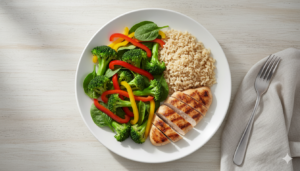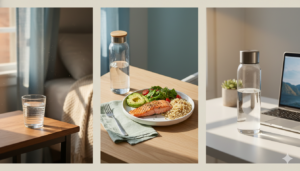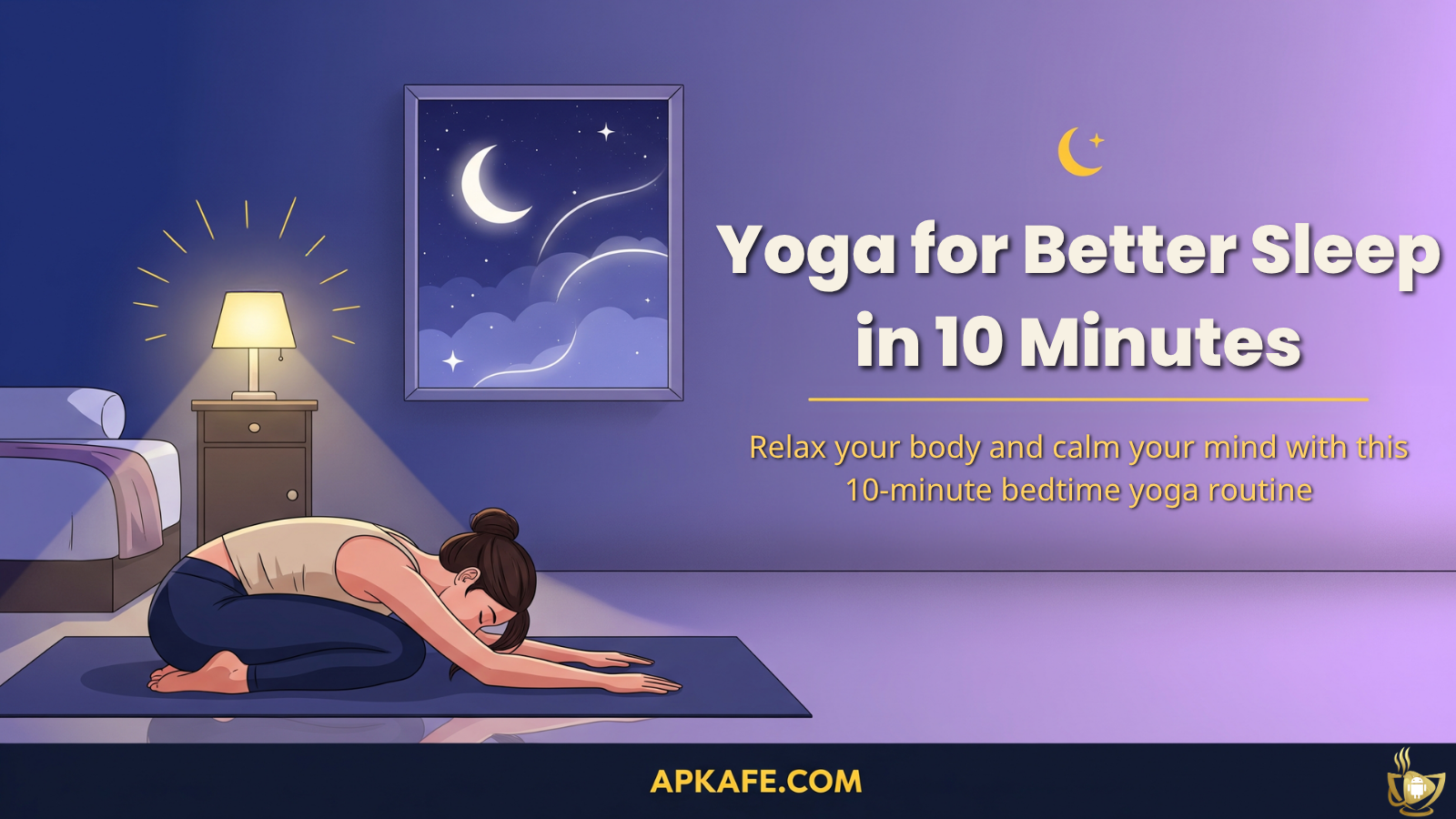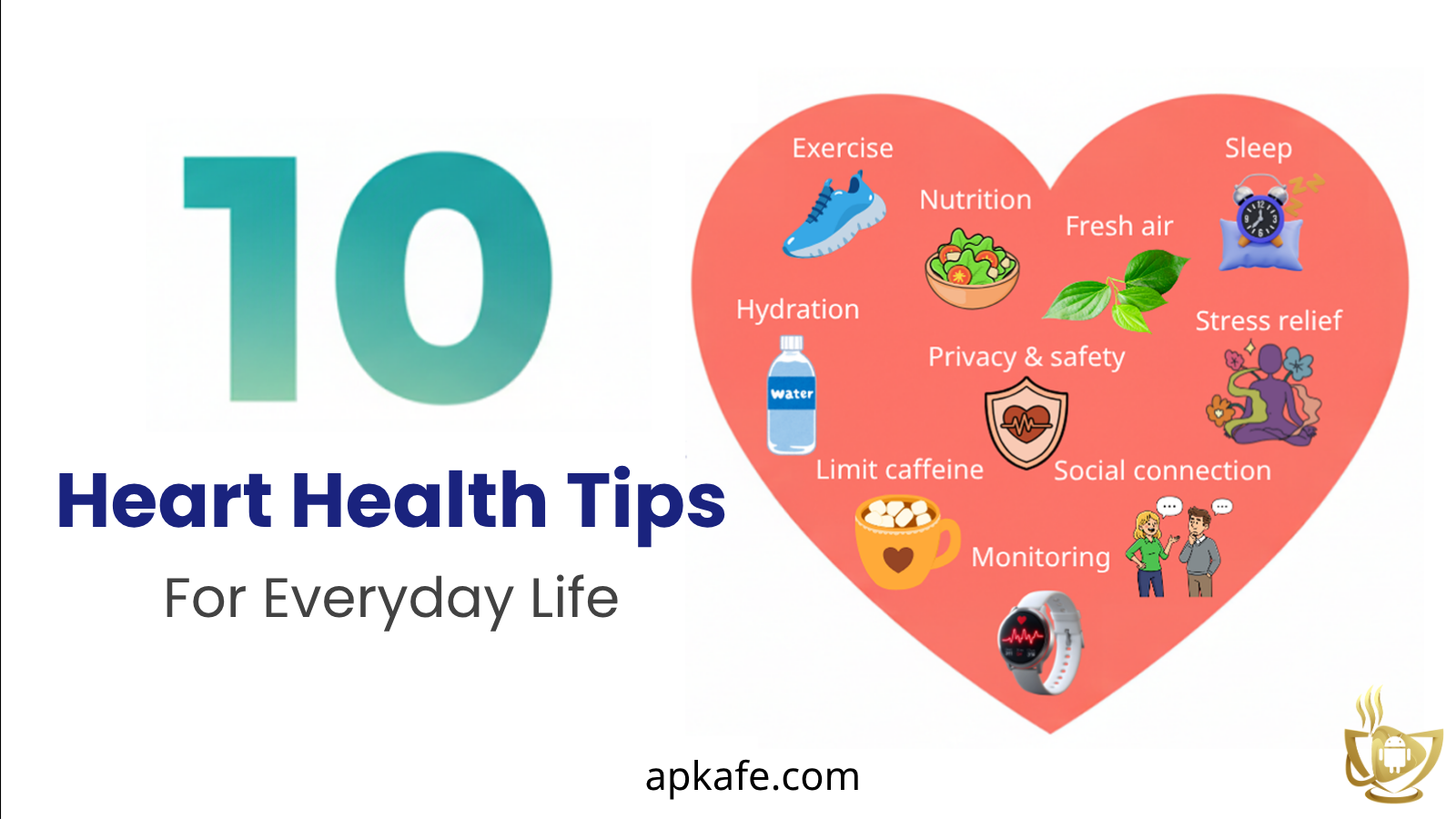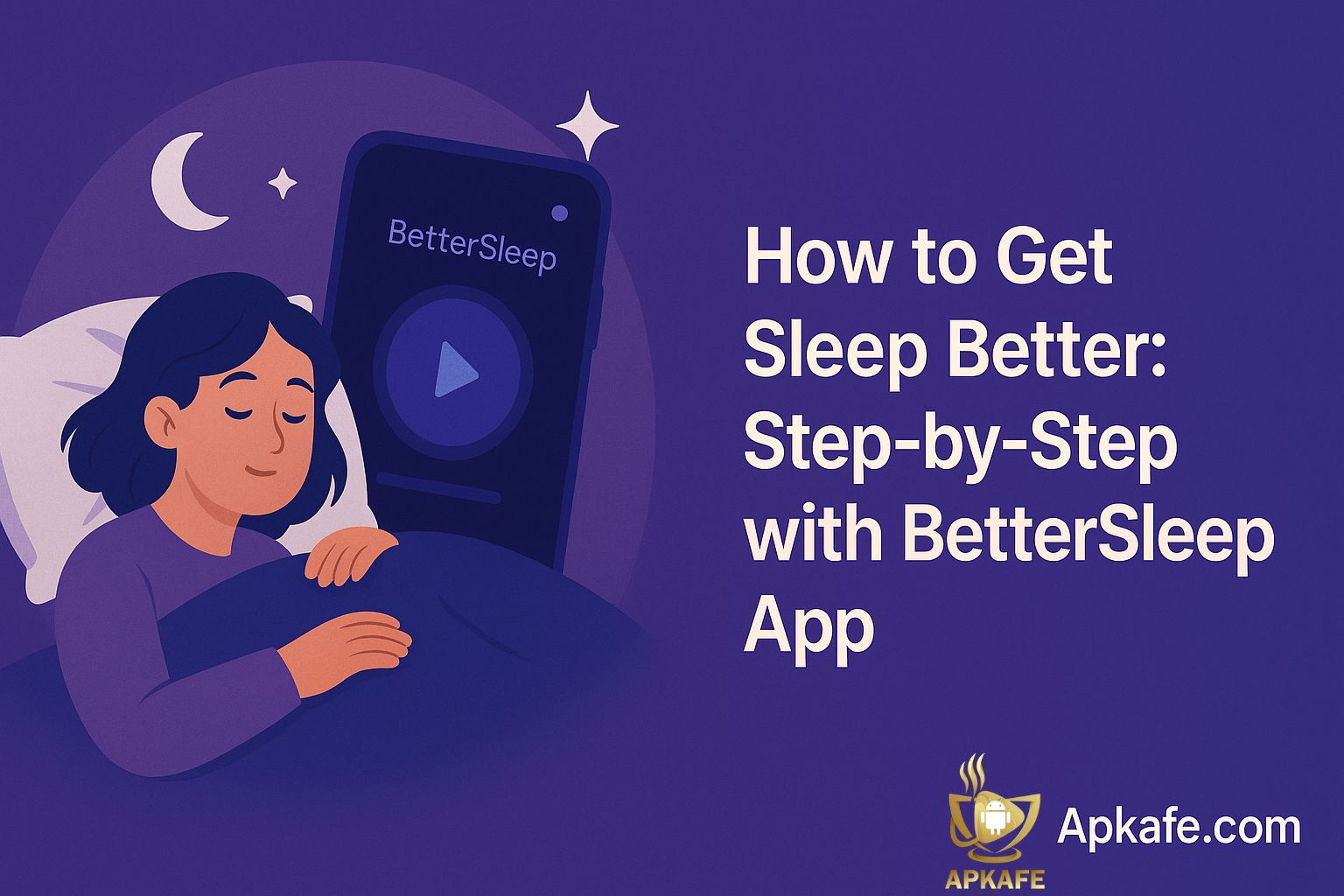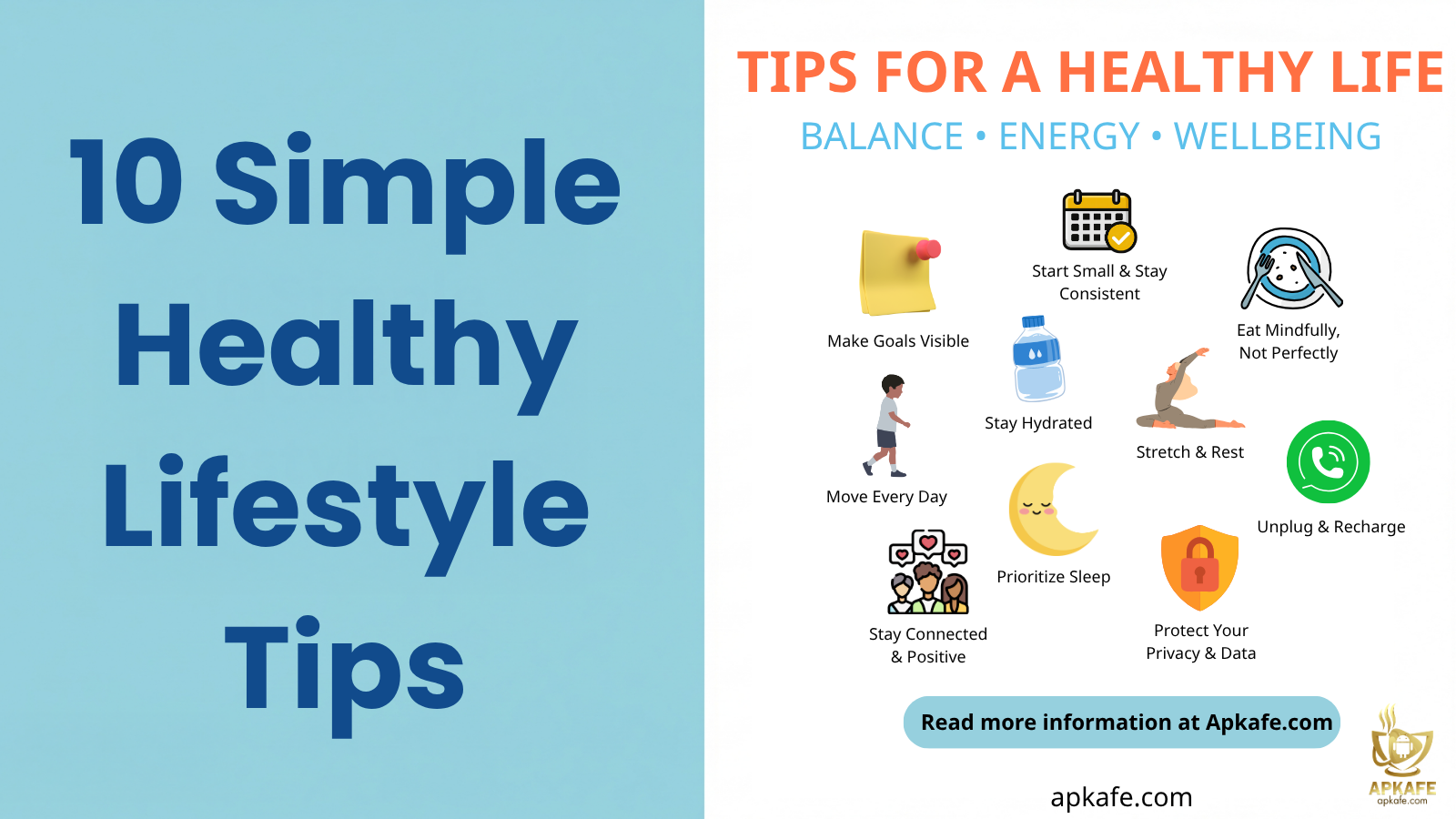Healthy Eating Tips (Beginner-Friendly How-To You Can Use Today)
You don’t need a perfect plan—just a safe, simple one you’ll actually follow. This guide shares healthy eating tips for beginners you can build on easily: seven practical steps you can stack over 2–3 weeks, with simple healthy eating habits, pitfalls to avoid, a health-and-privacy checklist, and quick answers to common questions. By the end, you’ll know exactly how to start your healthy eating routine today, what to watch for, and how to keep your momentum strong even when life gets busy.
Before you start: set expectations, safety, and a tiny first win
Start small, stay safe, and lock in one quick win so momentum beats motivation.
Quick readiness check (health history, meds, budget, kitchen basics)
Before changing food patterns, note any conditions (e.g., diabetes, kidney disease, GI disorders), medications that interact with nutrients (like blood thinners and vitamin K), and your current budget/time. Do a kitchen sweep: a cutting board, knife, pan, and storage containers cover 90% of beginner prep. Plan one small purchase only if needed (e.g., a water bottle or measuring cup). If you’re pregnant, have a chronic condition, or a history of disordered eating, consult a qualified clinician before starting.
Set a baseline (current meals, hunger cues, sleep/wake, water)
Log today’s meals and times, estimate portions with your palm/fist, and not hunger/fullness on a 1–10 scale before and after eating. Note sleep/wake times and total water intake. This snapshot informs simple swaps later (e.g., adding protein at breakfast if morning hunger spikes). Baselines prevent “all-or-nothing” jumps and let you see progress in days, not weeks.
Choose your tracking style (paper, notes app, privacy-first logging)
Pick the lightest method you’ll stick with. A tiny notes app entry—meal, time, hunger level—often beats photo logging. If you try any health app, disable non-essential permissions (location, contacts), keep data local when possible, and learn how to export/delete records. The goal is awareness, not perfection; tracking should take under two minutes per meal.
Step-by-step plan (7 beginner moves)
Each step works alone—stack them over 2–3 weeks for compounding benefits.
Step 1: Build a balanced plate with the “½ veg, ¼ protein, ¼ carbs” cue
Use a visual rule that fits anywhere: fill half your plate with non-starchy vegetables (e.g., leafy greens, broccoli, peppers), a quarter with protein (eggs, chicken, tofu, fish, beans), and a quarter with higher-fiber carbs (brown rice, whole-grain pasta, potatoes, fruit). Add a thumb of healthy fat (olive oil, nuts, seeds) for flavor and satiety. Not perfect? No problem—aim for the shape most of the time.
Pitfall: only adding veg but no protein.
Pro tip: roast a sheet pan of mixed veg on Sunday to speed weekday plates.
Step 2: Time your meals: consistent windows, don’t skip on purpose
Regular meal windows calm “graze or starve” cycles and reduce impulsive snacking. Start with 3 meals (roughly 4–5 hours apart) and add one planned snack if needed. Skipping on purpose often rebounds into overeating later—especially if sleep is short or stress is high.
Pitfall: “saving calories” for night.
Pro tip: preview your next meal in your head; knowing what’s coming lowers random grabs.
Step 3: Hydration habit: place 3 anchor sips (wake, lunch, mid-afternoon)
Mild dehydration mimics hunger and fatigue. Don’t chase a magic number—anchor three tall glasses: right after waking, with lunch, and mid-afternoon. Add more around workouts or hot weather. If you dislike plain water, try sparkling water or unsweetened herbal tea.
Pitfall: chugging late-night fluids and disrupting sleep.
Pro tip: keep a filled bottle in your line of sight; visibility drives behavior.
Step 4: Protein at each meal (easy swaps & portable options)
Protein helps fullness and preserves lean mass during weight changes. Add ~1 palm-sized portion (or cupped-hand beans/Greek yogurt) per meal. Quick options: canned tuna or chickpeas, string cheese, boiled eggs, edamame, rotisserie chicken, tofu cubes.
Pitfall: relying only on refined carbs at breakfast.
Pro tip: pair protein with fiber (fruit, whole grain) to smooth energy.
Step 5: Fiber first (fruit/veg/whole grains/beans) and label basics
Aim to add one fiber source at the start of a meal or snack—apple before lunch, side salad, or beans in chili. When label reading, use the simple triad: fiber ≥3g per serving, added sugar as low as possible, and sodium <20% DV per serving for frequent foods.
Pitfall: jumping fiber too fast—can cause GI discomfort.
Pro tip: increase fiber gradually and add water to match.
Step 6: Plan 2 fallback meals for hectic days (10–15 minutes max)
Decide now on two “busy-day” meals you can assemble anywhere. Examples: (1) whole-grain wrap + hummus + rotisserie chicken + bagged salad; (2) microwave brown rice + frozen mixed veg + tofu/eggs + soy sauce + sesame oil. Keep ingredients on your weekly list.
Pitfall: waiting until you’re starving.
Pro tip: pre-chop or buy pre-cut veg to remove friction.
Step 7: Sleep supports appetite: set a gentle wind-down (BetterSleep optional)
Short sleep increases hunger and cravings while making restraint harder. Protect 7–9 hours by choosing a “lights-down” ritual: dim screens 60 minutes before bed, a warm shower, or a 10-minute body scan. If you use the BetterSleep app, try its wind-down soundscapes or breathing routines as a cue to stop evening snacking.
Pitfall: caffeine late in the day.
Pro tip: anchor bedtime to a non-negotiable routine (teeth, PJs, app cue).
Pitfalls & pro tips
Avoid the traps that derail beginners and borrow shortcuts that pros use.
Common mistakes (all-or-nothing, over-restricting, ignoring sleep, skipping fiber/water)
- All-or-nothing thinking: A less-than-ideal meal isn’t failure—just return to your next balanced plate.
- Over-restriction: Extreme diets can trigger rebound eating and stress.
- Ignoring sleep: Poor sleep elevates hunger hormones and snack drive.
- Skipping fiber/water: Leads to low fullness and energy dips.
Pro reframe: “Add before subtracting”—add veg, protein, and water before worrying about cutting foods.
Pro tips (mise en place, batch-prep, “plus one veg,” snack pairing, mindful first bite)
- Mise en place: Set out tools/ingredients before cooking to halve prep friction.
- Batch-prep: Cook grains/beans/veg once; mix-and-match all week.
- Plus one veg: Add one extra vegetable to any meal you already eat.
- Snack pairing: Pair protein + fiber (e.g., yogurt + berries; nuts + fruit).
- Mindful first bite: Pause 10 seconds on bite one; it slows everything naturally.
Contraindications & when to pause
Know the red flags—safety beats speed every time.
Who should consult a professional first
If you’re pregnant or breastfeeding, have diabetes, kidney, liver, or GI disease, food allergies, are on medications that require meal timing (e.g., insulin), or have a history of disordered eating, talk with a licensed healthcare professional or registered dietitian before making changes. Tailored advice protects your safety and outcome.
Stop-if signals
Stop and seek medical guidance if you experience dizziness, fainting, chest pain, severe GI symptoms, rapid unintended weight change, or mental distress related to eating. Health comes first; adjustments are always possible later.
Light-touch app helpers (privacy-first)
Use tools as gentle prompts, not as judges.
BetterSleep for wind-down cues that stabilize late-night snacking
Evening routines reduce snack impulses. BetterSleep offers guided breathing, soundscapes, and routines that prompt “kitchen closed” cues. Use audio-only if screens keep you up. Disable non-essential app permissions and review export/delete options regularly.
Minimal-data meal notes & turning off non-essential permissions
If you track food, a three-line note (what/when/hunger) may be enough. Turn off location, contacts, Bluetooth scanning unless truly needed, and avoid uploading photos of others or labels with personal details. Set reminders to audit app settings monthly.
Safety & Privacy (Health)
Protect your body and your data while building healthy habits.
Health disclaimer (educational only): This guide is for general education, not diagnosis or personalized medical advice. Consult a qualified professional for concerns, symptoms, or conditions. If acute symptoms occur (e.g., chest pain, severe weakness), seek urgent care.
Data-permissions mini-checklist:
- Request only necessary permissions (notifications, not location).
- Prefer local data storage; if cloud is used, review encryption and access controls.
- Learn how to export and delete your data.
- Use two-factor authentication for accounts syncing health data.
- Review privacy policies for data sharing with third parties.
Quick Implementation Checklists
7-Step Starter Checklist
| Step | Do this | Time cost | Done |
|---|---|---|---|
| 1 | Aim for ½ veg, ¼ protein, ¼ carbs | +5 min / meal | |
| 2 | Set 3 meal windows + optional snack | 2 min plan | |
| 3 | 3 anchor waters (wake, lunch, afternoon) | 0–5 min | |
| 4 | Add a palm of protein each meal | +1 min | |
| 5 | Add 1 fiber source first | +1 min | |
| 6 | Choose 2 fallback meals | 10–15 min prep | |
| 7 | Set wind-down & lights-down | 10–20 min |
App & Privacy Checklist
| Item | Why it matters | Action |
|---|---|---|
| Permissions | Reduce unnecessary data exposure | Turn off location/contacts |
| Data control | Ownership & portability | Learn export/delete steps |
| Sync security | Prevent unauthorized access | Enable 2FA |
| Minimal tracking | Keeps focus & privacy | Use text notes vs photos |
| Review cycle | Catch policy/app changes | Monthly settings audit |
Conclusion
If you choose just one starting point today, use the ½ veg – ¼ protein – ¼ carbs plate cue and set three water anchors (wake-up, lunch, mid-afternoon). Then layer on protein at each meal, fiber first, two 15-minute fallback meals, and a gentle wind-down routine to curb late-night snacking. Track lightly (what/when/hunger), increase fiber gradually, and respect any health “red flags.” The goal isn’t perfection—it’s steady, sustainable wins.
Health & privacy note: This guide is educational and not medical advice. If you’re pregnant, have chronic conditions, take meal-timed meds, or have a history of disordered eating, consult a professional first. Protect your data by limiting app permissions, enabling 2FA, and knowing how to export/delete your records.
Start the 7 steps today: pick one tiny habit and apply it to your very next meal. Keep learning: 12 tips for good health .
FAQs
Q1: What’s one change to start with this week?
Start with Step 1: the ½–¼–¼ plate cue. It’s flexible, works at home or restaurants, and dovetails with all other steps.
Q2: Are snacks okay—and what does “balanced” look like?
Yes. Pair protein + fiber: Greek yogurt + berries, cheese + apple, nuts + pear, hummus + carrots. Keep portions palm-sized.
Q3: Do I need to count calories or track macros?
Not to start. Light awareness (meal timing, protein + fiber) solves most beginner issues. If you choose to track, do it short-term and privacy-first.
Q4: How do I eat healthy on a budget and with limited time?
Batch-cook grains/beans, use frozen veg, and rotate two fallback meals. Shop generic, buy in-season, and repurpose leftovers.
Q5: Can I still enjoy sweets/eating out without “ruining” progress?
Yes—use “add before subtracting.” Build a balanced plate, enjoy the dessert mindfully, and return to your next balanced meal.
Q6: What about supplements?
Food first. Supplements may help in specific cases (e.g., vitamin D, iron) but should be guided by testing and professional advice.
Q7: Is intermittent fasting required?
No. Some like time-restricted eating, but many beginners do better with consistent windows and adequate protein/fiber.
User Reviews

